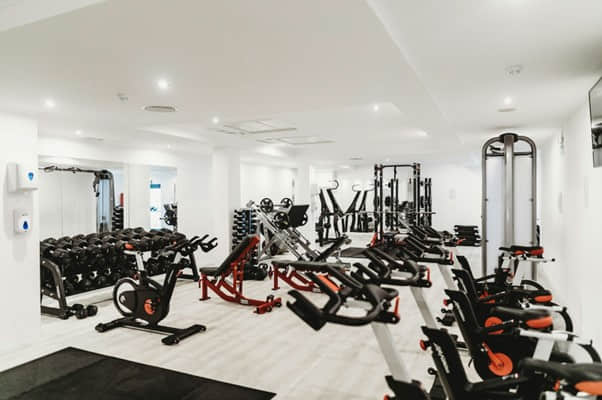
Embarking on a fitness journey can be an exhilarating yet daunting experience, especially for beginners. The array of gym equipment available may seem overwhelming, but fear not – we are here to guide you through the process. In this detailed beginner’s guide, we will break down the essentials of using gym equipment, ensuring you step into your fitness routine with confidence and enthusiasm.
Setting the Foundation
Before diving into the intricacies of gym equipment, it’s crucial to establish a solid foundation for your fitness journey. Understanding your fitness goals is the first step in creating an effective workout routine. Whether you aim to build muscle, shed weight, improve cardiovascular health, or enhance overall well-being, having a clear goal will inform your equipment choices and guide your workout plans.
Once your goals are defined, create a personalised workout plan. A well-rounded plan might include a mix of cardio, strength training, and functional exercises. Consider consulting with fitness professionals or using online resources to tailor a plan that suits your needs and preferences.
The Gym Equipment for Beginners
Now that you’ve set your fitness goals and have a plan in place, the next step is to get on to the gym floor with confidence. Large gyms may appear intimidating, but with our guide, you’ll feel at ease exploring the diverse range of equipment.
Cardiovascular Equipment
Cardiovascular exercise is fundamental for heart health and overall fitness. These can be treadmills, elliptical trainers, and stationary bikes. Begin your workout with 20-30 minutes of moderate-intensity cardio to warm up your body and elevate your heart rate.
1. Treadmill

A treadmill is a cardio and conditioning machine that allows you to walk, jog, run, or sprint on a flat surface or incline, catering to various workout goals. Start by stepping onto the machine and adjusting the speed to a comfortable walking pace. Hold onto the handrails for stability if needed. Gradually increase speed as you become more comfortable.
To change intensity, adjust the incline. Keep a natural stride, landing softly on the treadmill. Utilise safety features, like the emergency stop button. As you finish, gradually decrease speed, and allow the machine to come to a complete stop before stepping off.
2. Rowing Machine
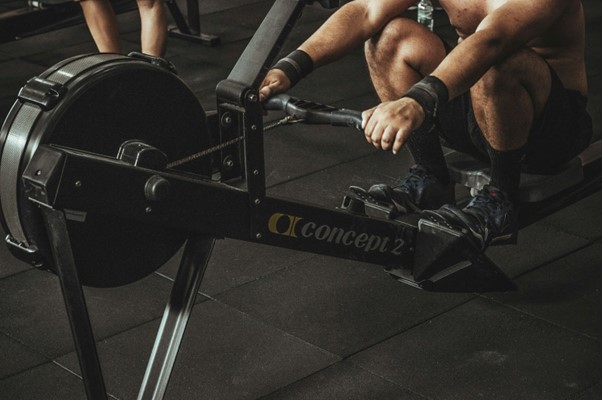
The rowing machine is a fantastic choice for cardio training, offering a low-impact and joint-friendly exercise that effectively challenges your fitness and cardiovascular health. This equipment engages your entire body, with a recommended distribution of effort: 60% from your legs, 30% from your core, and 10% from your upper body.
Start by adjusting the foot straps to secure your feet. Sit on the seat with a straight back, gripping the handle with both hands. Begin by pushing with your legs, then lean back slightly, and finally, pull the handle towards your chest, keeping elbows close. Reverse the motion by extending your arms, leaning forward, and bending your knees. Maintain a smooth, controlled pace to engage muscles and maximise the cardiovascular benefits. Focus on proper form to prevent injuries and gradually increase intensity as you become more comfortable with the rowing motion.
3. Stationary Bike
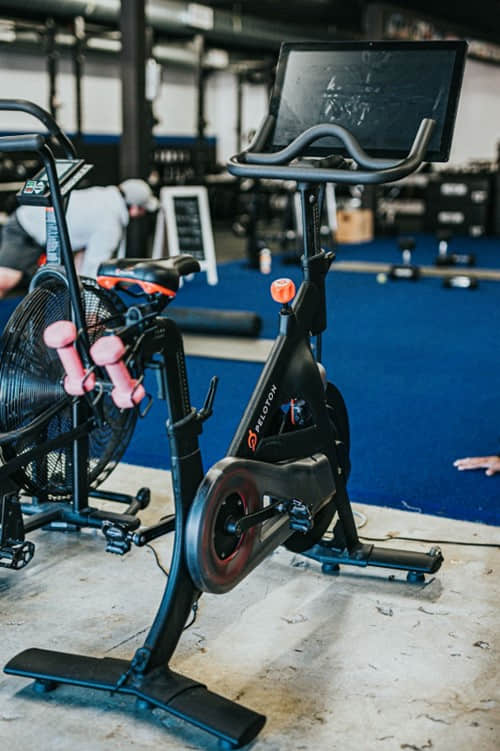
This is another popular cardio machine that can be both enjoyable and effective when used correctly. Primarily targeting the lower body, a bike machine challenges leg and core strength while enhancing cardiovascular fitness and endurance.
Adjust the bike seat to hip height, maintaining an upright posture with shoulders back as you lean slightly over the handlebars. Pedal as you would on a regular bicycle, adjusting the resistance on the machine base to either challenge leg strength and cardiovascular capacity or facilitate a steady-state cardio session.
Strength Training Equipment
Strength training is essential for building muscle and boosting metabolism. Lee Warehouse offers a variety of resistance machines and free weights. Start with compound exercises like squats, deadlifts, and bench presses to engage multiple muscle groups. Gradually incorporate isolation exercises to target specific areas.
1. Seated Chest Press Machine
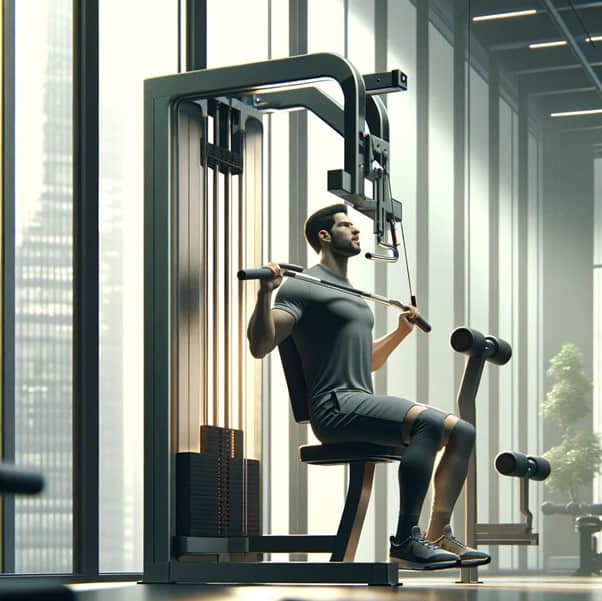
This targets your chest muscles, triceps, and shoulders, delivering an effective upper-body workout. Sit upright on the seat, then press both handles away from your body to extend your arms, maintaining a slight bend in your elbows. Slowly release the handles, bringing them back toward your body while controlling the movement speed. Engage your back and core muscles throughout the exercise, and remember to breathe for optimal results.
2. Lat Pulldown
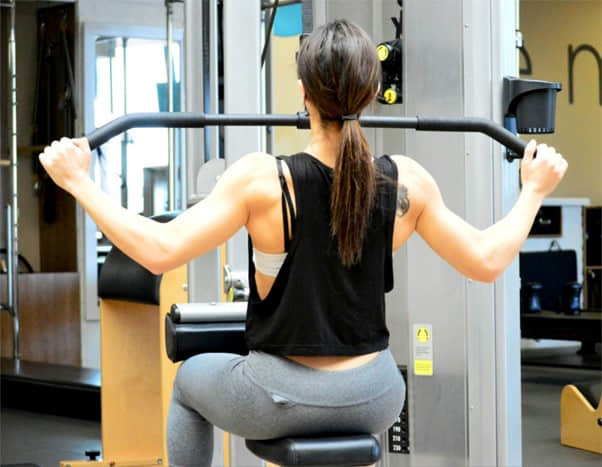
This machine aims at your mid-back muscles and engages your core. Begin by sitting upright on the seat, reaching up to grab the bar or handles positioned above your head, with your hands slightly wider than shoulder-width. Slowly pull the bar down to your upper chest and then control its release, gradually returning it to the starting position. Maintain a strong and straight posture, ensuring your hips and buttocks remain firmly on the seat. If you find yourself lifting off the seat, it indicates the weight is too heavy; therefore, reduce the weight until you can maintain proper form.
3. Smith Machine
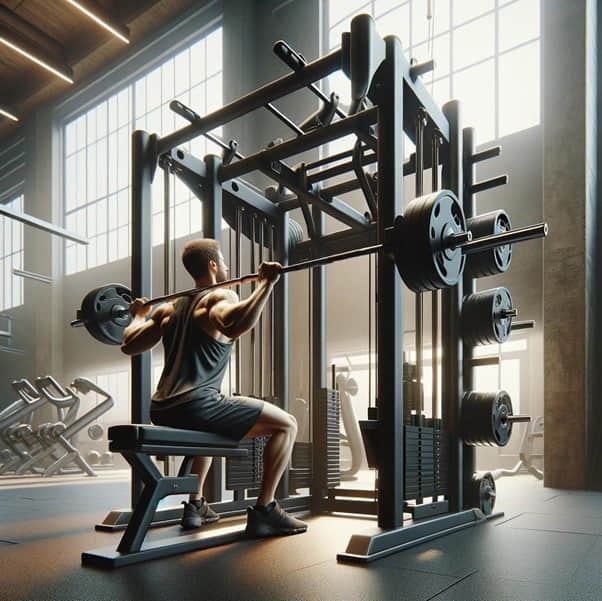
The Smith machine is a valuable tool for safely performing weighted squats. It locks the barbell into a rack, restricting your range of motion. This machine effectively targets your lower body, engaging the glutes and quads in a manner similar to a traditional barbell squat.
Start by adjusting the bar to chest height. Stand inside the machine, positioning your feet shoulder-width apart. Choose your desired weight and secure it on the barbell. Grasp the bar with an overhand grip and lift it off the hooks. Perform exercises like squats or bench presses, keeping controlled movements and proper form.
Functional Training Area
Functional training focuses on movements that enhance everyday activities. Our functional training equipment, such as kettlebells, resistance bands, and stability balls, allows for dynamic workouts.
Some commonly performed exercises like Squats, lunges, lighter deadlifts, bicep curls, kettlebell swings, push presses, squat-to-press, snatches, ball slams, wall balls, and shoulder presses can be done with these pieces of equipment. However, the possibilities are endless!
What’s Best for Beginners?
Starting with lighter weights, fewer reps, and less challenging equipment is advisable. As you gradually build strength, fitness, and confidence, you can progress to more advanced equipment. This approach helps prevent injuries and allows for the development of a sustainable workout routine. It’s a journey of progression and gaining confidence in your sessions as you go. Remember, consistency is key, and with us by your side, you’re equipped for success in your fitness journey.
Conclusion
Embarking on a fitness journey with the right knowledge and equipment is the key to success. By understanding your goals, confidently navigating the gym floor, and using equipment safely and effectively, you’ll be well on your way to achieving your fitness aspirations. For beginners stepping into the gym, the best equipment is what makes you feel comfortable and confident.
